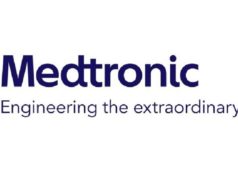This advertorial is sponsored by Medtronic.

Upon gaining CE-mark approval in September of last year, the Rist radial access system (Medtronic) became the first dedicated technology on the European market providing interventionists with the option of accessing their patients’ neurovasculature via the radial artery pathway for haemorrhagic stroke indications. Alejandro Tomasello (Vall d’Hebron Hospital, Barcelona, Spain) was one of the first physicians in all of Europe to use Rist for neurovascular procedures. Here, he sits down with NeuroNews to discuss his experiences of the system, as well as the benefits offered by transradial access and the likely place for this approach within existing treatment protocols.
To date, Tomasello and his team at Vall d’Hebron Hospital have completed more than 50 cases with the Rist radial access system throughout a period of several months. As per the indications Rist is currently approved for in the European Union, the majority of these cases have involved haemorrhagic stroke-related procedures with flow diverters and other intrasaccular devices used to treat intracranial aneurysms. These cases have also been a mix of elective and acute cases, Tomasello reports.
“We are really happy with [Rist], because the behaviour of the catheter is wonderful and the navigability is so good—and, in my experience, it is also extremely user-friendly,” he says. Tomasello and his colleagues have also used Rist more sporadically for alternative indications beyond haemorrhagic stroke—including in select carotid artery stenting (CAS) procedures and interventions requiring multiple accesses, such as arteriovenous malformation (AVM) and dural arteriovenous fistula (AVF) treatments—and he believes these are areas in which radial access holds further promise.
Benefits of radial access with Rist
According to Tomasello, one of the more significant benefits offered by the transradial approach is a reduction in complications as compared to more established transfemoral access protocols. For one, he says, deploying radial access means that it is not necessary to cross the ascending aorta—which is known to play a role in the development of arteriosclerosis. In addition, the aggressive dual antiplatelet therapy used alongside femoral access procedures leads to an overall complication rate of up to 10%, with major complications and retroperitoneal bleeding being seen in around 2% and 0.4–0.5% of cases, respectively, as well. “But, when you move to the radial approach,” Tomasello claims, “there are almost zero complications, and this really is something remarkable.”
“If you select patients for Rist properly, it is extremely safe, and the possibility of having a complication relating to the radial access approach itself is limited to very few cases.”
“We also understand that the use of radial access affects the whole procedure process,” he continues. “For example, you are often able to discharge the patient sooner.” Tomasello points to specific procedures like diagnostic arteriographies and CAS interventions whereby radial access can enable the patient to be discharged on the same day. “The impact of radial access is incredible—especially in countries where they keep the patient in the hospital for multiple days,” he says. “You will save a lot of money if you discharge your patient sooner and, in our experience, you can probably discharge elected patients one or two days earlier compared to femoral access.” In addition to this positive economic impact, Tomasello notes that earlier patient discharge following acute cases may allow rehabilitation to begin sooner.
He goes on to state that there are logistical advantages to using radial access systems like Rist too. From the patient’s perspective, it carries increased levels of comfort, as they do not have to lie completely flat during the procedure, and the radial artery is also less affected by patient movement during the intervention than the femoral artery—something Tomasello feels is especially relevant for post-procedure agitated patients, as well as for nursing teams.
Progress requires cautious, evidence-based approach
In spite of this apparent glut of positives favouring radial access, Tomasello believes that “we are yet to fully understand the clinical benefits of radial access” in the neurovascular space, adding that, beyond the known reduction in complications, further research and experience will still be key in elucidating the specific patients it is suitable for. And, while comparisons between the two are necessary, he warns that directly pitting radial and femoral approaches against one another may be a “mistake”—not least because the latter is an established and well-accepted method for accessing the neurovasculature quickly, and safely.
Tomasello also emphasises the need to incorporate Rist, a relatively new technology, into clinical practice based on existing evidence and common sense, and warns that this process should be done methodically. “In neurointervention specifically, this is vital, because the risks in our space are even greater than in other types of surgery,” he says. “I think it is important, despite the positive effect of radial access, that we move slowly, and do so based on the evidence we have.” Another major factor in the implementation of radial access within healthcare systems is education. “You have to properly train your team,” Tomasello continues. “And, when it comes to radial access, you have to think about the whole team, not just the physician, because it requires more work logistically inside the angio suite. All changes like this—even if they offer something better—have a learning curve.”

The current literature on radial access, which is derived largely from the cardiology space, has indicated that roughly 70 cases are needed to build up skillsets and offer radial access as a safe, effective option to the patient. “However, my understanding is that this may depend on the level of training the physician has,” Tomasello claims. “If you have a well-trained neurointerventionist wit decades of experience, they will probably only need 10 or 20 cases.” He also reiterates here that radial access training is “extremely important”, and will continue to be so if the approach is expanded to ischaemic stroke indications, and thrombectomy procedures, in the future, owing to the ‘time is brain’ mantra and the fact these interventions must be completed quickly.
Accessing the future
“Radial access is not a new toy—it has come to stay, in my opinion,” Tomasello states, but tempers this by adding that it will not replace the femoral access approach completely. “Logic dictates that the two will coexist, and the choice will be made based on operator skill, healthcare centre protocols and, of course, benefit to the patient and their anatomic parameters,” he continues. Discussing potential next steps for Rist and radial access technologies more generally, Tomasello notes that a future increase in the variety of diameters available for these catheters may open up new possibilities in terms of appropriate patient anatomies and indications, and expand their adoption.
“I am convinced that radial access offers a lot of benefits for the patient—but we have to prove this to more physicians and the neurointerventional world in order to move the market towards radial access,” he adds. “If you select patients for Rist properly, it is extremely safe, and the possibility of having a complication relating to the radial access approach itself is limited to very few cases.” Citing these benefits once more, and owing to the fact the financial costs of implementing both approaches into daily practice are “completely equivalent”, Tomasello concludes that radial and femoral access techniques will likely feature side-by-side in many hospitals moving forward—but that, once the role of radial access has been fully established in the coming years, more than half of all neurointerventions could be performed via this approach.
Alejandro Tomasello is the head of the Interventional Neuroradiology Unit at Vall d’Hebron Hospital in Barcelona, Spain.
DISCLAIMER: The data and content included in this presentation express only the clinical perspective of the presenter. They are completely independent and do not necessarily reflect the opinions of Medtronic.













